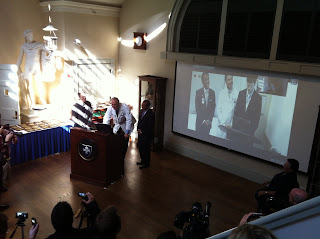CIS was first implemented at Baystate Health in 2004, first in the hospitals and then followed by an incremental rollout across over 70 Baystate Medical Practices. To date, Baystate has achieved many successes with our electronic medical record. We have been recognized as a HIMSS Level 6 organization, a measure of EMR implementation shared by only 4% of hospital systems across the nation. And Baystate Health was one of the first integrated delivery networks in the country to have demonstrated Meaningful Use of the electronic medical record.
But these are laurels bear no meaning as we work hard taking care of our patients day and night. Just this week, many of us have been challenged with a new means of discharging patients from the hospital. While the introduction of the Depart Process has bolstered completion of Medication Reconciliation, it has also added to the heap of EMR skills required to get our work done. And these new tasks seem to come out of nowhere and without explanation or negotiation. I wouldn't argue that this isn't stressful, but I do believe in the value of this new workflow. I can only say that with time and proficiency, the logic of their necessity will be revealed.
I recently started Rob Smith’s Mindfulness-Based Stress Reduction program, one that is specifically designed for physicians. During both the introductory session and the first official session, the misery of the EMR was reported by more than a few colleagues when asked for their reason for enrolling. While not all who shared this sentiment are CIS users, their preponderance was not lost on me.
The clinical milieu is bogged down by administrative and data-driven tasks, often a result of electronic inefficiencies or shortcomings. And, while we truly have had outstanding success with CIS, there is no doubt that your experience leaves much to be contented. So, in an effort to improve these circumstances, we recently engaged the services of Aspen Advisors, a consulting firm with expertise in Cerner, to help us identify how best to optimize our automated electronic systems.
A team of consultants spent a number of hours visiting four BMP practice sites: South Hadley Adult Medicine, General Pediatrics at 3300 Main St., the Wesson Women's Clinic, and Thoracic Surgery. I also escorted them through a number of BMC wards, including medical, surgical, pediatric and critical care units. In the practice sites, providers and staff were asked to both demonstrate current methods of use and also help to define the benefits as well as the weaknesses of CIS. I also provided Aspen the complete set of results from the CIS Users Satisfaction Survey that over 1000 CIS users completed, including 75 pages of your comments.
It is our expectation that these visits, in addition to the dozens of spontaneous conversations held with house staff, physicians and nurses throughout BMC, will culminate in a constructive analysis of our EMR and a forward-thinking strategy to improve the usability of CIS for all patient care and clinical practice needs. I will surely report on those results when they become available. In the meantime, I invite you to contact me by whatever means of your choice with questions, comments and concern.





